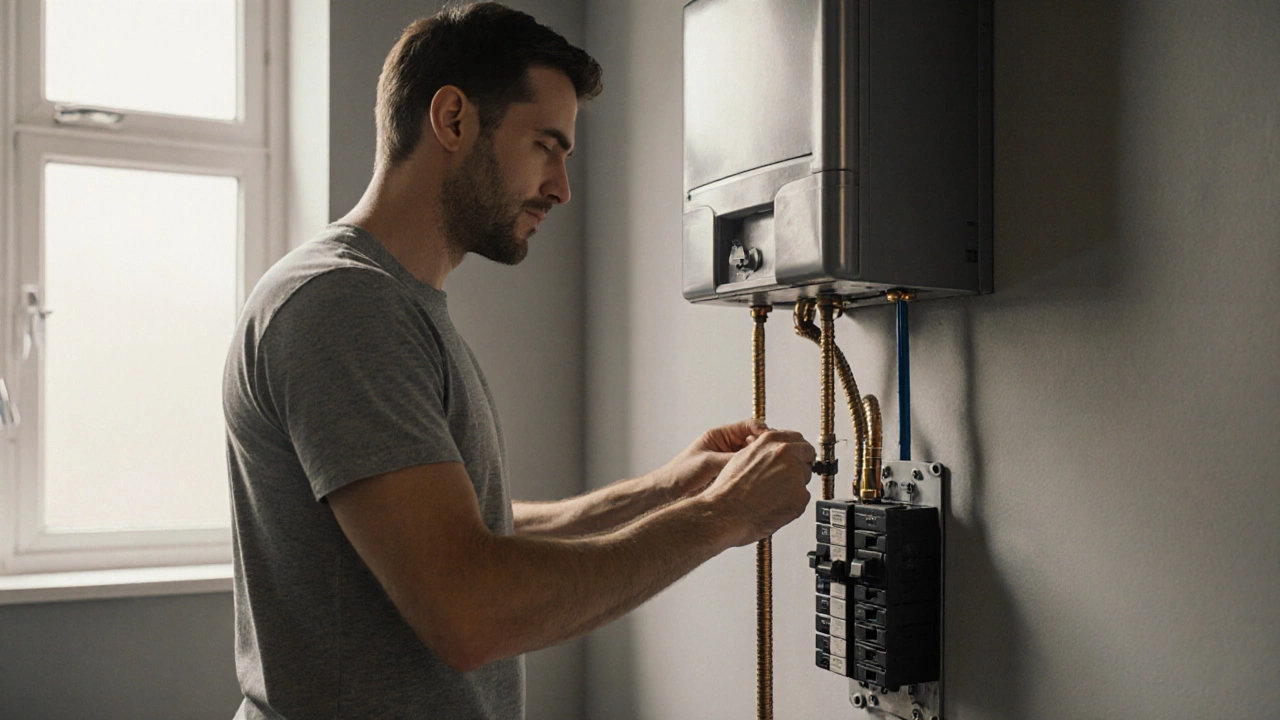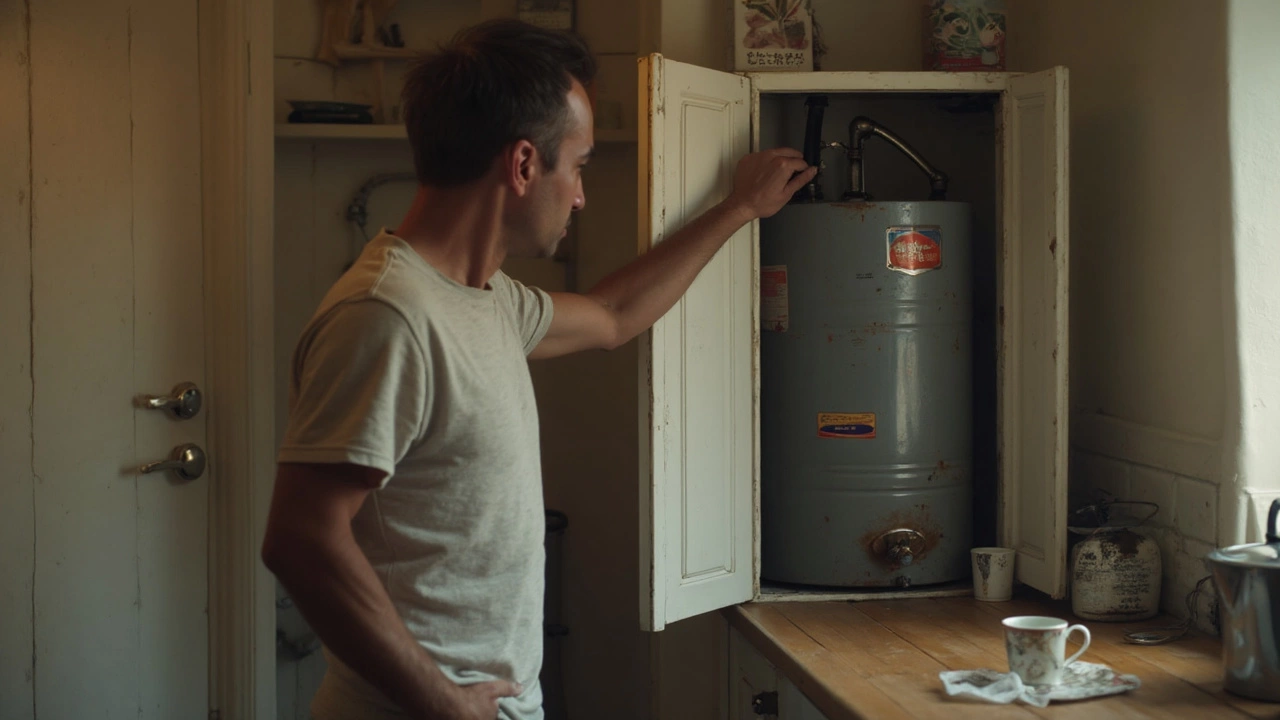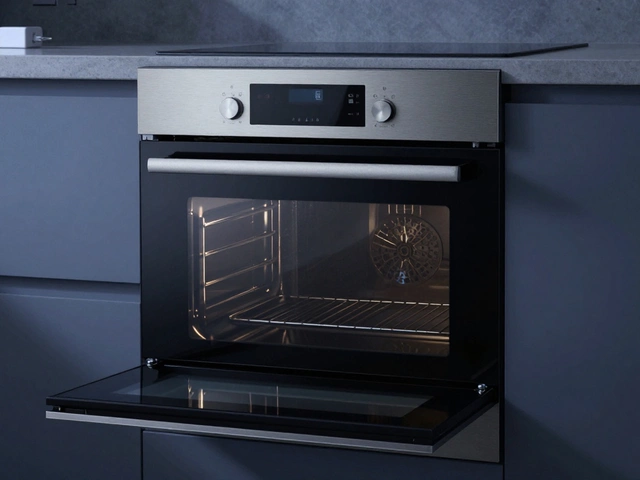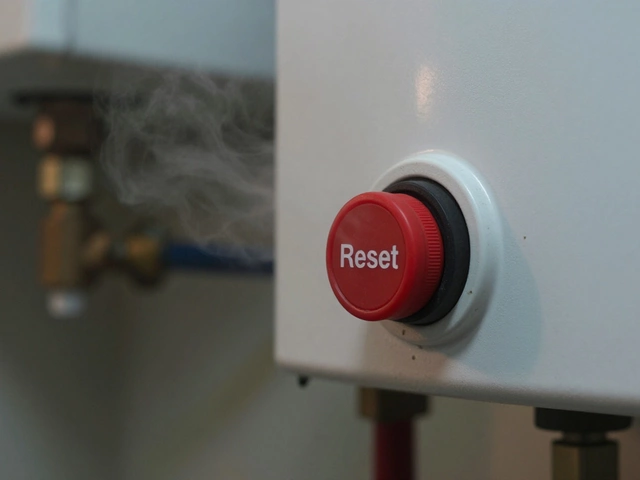Water Heater Reset Assistant
Which Type of Water Heater Do You Have?
Select your water heater type to get specific reset instructions.
When the hot water stops and the reset light blinks, the instinct is to reach for the breaker. But Water Heater is a large appliance that stores and heats water using either electricity or gas, and the safety steps differ from a simple light switch.
Key Takeaways
- You should always turn off the circuit breaker before touching any electrical components of an electric water heater.
- Gas water heaters have a separate gas shut‑off valve that must be closed before resetting.
- Resetting involves pressing the reset button on the thermostat or high‑limit switch after the breaker is off.
- If the heater trips again, check for sediment buildup, a faulty thermostat, or a tripped high‑limit switch.
- Regular maintenance reduces the need for frequent resets and prolongs the unit’s life.
Why the Breaker Matters
In an electric Circuit Breaker, the metal contacts open when the current exceeds a preset limit, protecting the wiring and the heater from overload. Flipping the breaker off cuts power to the heating elements, the thermostat, and the high‑limit switch, making it safe to handle the internal components.
If you skip this step, a sudden jolt can damage the thermostat, the reset button, or even cause a dangerous short circuit. It’s not just about personal safety-protecting the equipment avoids expensive repairs.
Step‑by‑Step: Safely Resetting an Electric Water Heater
- Turn off the breaker. Locate the electrical panel and flip the dedicated heater switch to the OFF position. Wait at least 30 seconds to let any residual charge dissipate.
- Remove the access panel. Most tanks have a screw‑on cover that hides the thermostat and reset button.
- Thermostat check: The thermostat controls the temperature setpoint. If it’s stuck, the heater may overheat and trip the breaker.
- Locate the High‑limit Switch. This safety device shuts off power when water temperature exceeds a safe threshold.
- Press the Reset Button firmly. You should feel a slight click; this releases the internal latch.
- Replace the access panel, then flip the breaker back ON.
- Wait a few minutes for the heater to fire up. Hot water should return within 10‑15 minutes, depending on tank size.
The whole process hinges on one simple rule: water heater reset should never be attempted with live power feeding the unit.
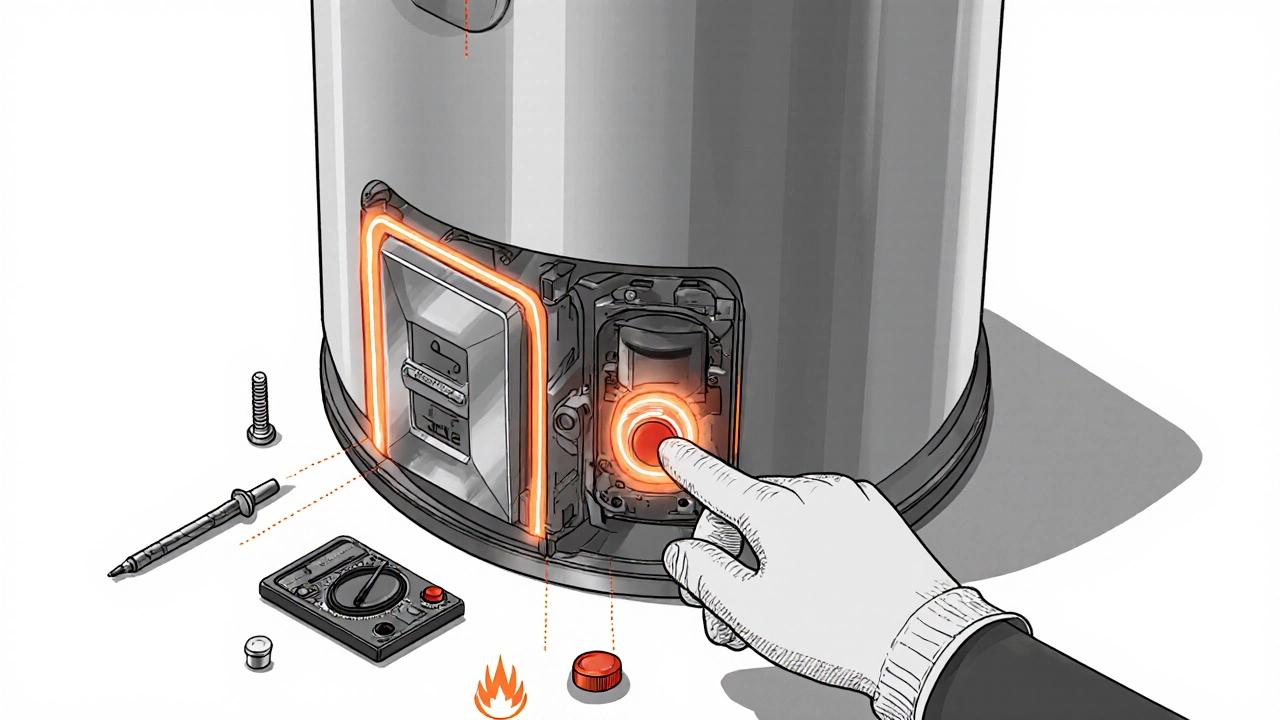
Gas Water Heaters: Different Rules, Same Goal
Gas‑powered units don’t rely on a breaker, but they have a Gas Shut‑Off Valve that must be closed before you reach inside. After the valve is off, follow the same steps to locate the thermostat and reset button-many gas models share the same internal design.
What If the Heater Trips Again?
Repeated trips usually point to an underlying problem. Here are the most common culprits:
- Heavy sediment build‑up. Minerals settle at the bottom of the tank, insulating the heating element and causing it to overheat.
- Faulty thermostat. A broken thermostat can send constant power to the element, tripping the breaker.
- Malfunctioning high‑limit switch. If the switch itself is weak, it may open at a lower temperature than intended.
- Electrical issues. Loose wiring or a degraded breaker can cause intermittent trips.
Addressing these issues often requires draining the tank, flushing out sediment, and testing the thermostat with a multimeter. If you’re not comfortable with electrical diagnostics, it’s best to call a professional.
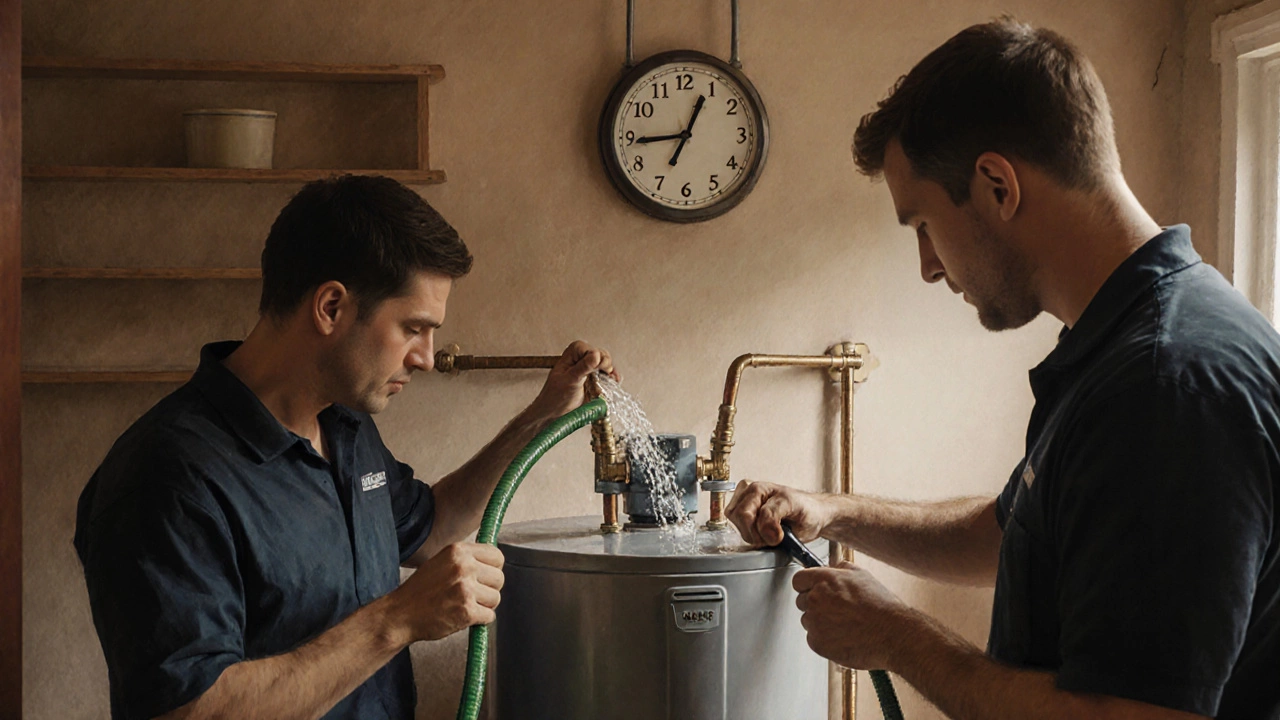
Quick Comparison: Electric vs. Gas Reset Procedures
| Step | Electric Heater | Gas Heater |
|---|---|---|
| Power source isolation | Turn off Circuit Breaker | Close Gas Shut‑Off Valve |
| Access panel removal | Same | Same |
| Locate thermostat | Identify and inspect | Identify and inspect |
| Find high‑limit switch | Press reset button | Press reset button |
| Restore power | Flip breaker ON | Open gas valve slowly |
| Check hot water | Wait 10‑15 min | Wait 5‑10 min |
Maintenance Tips to Avoid Future Resets
Regular care keeps the heater humming and cuts down on emergency trips. Here are three easy habits:
- Flush the tank once a year. Pull the cold‑water inlet valve, attach a garden hose, and run water until it’s clear.
- Inspect the anode rod every two years. A corroded rod speeds up tank wear and can cause premature overheating.
- Test the thermostat and high‑limit switch annually with a multimeter set to continuity. Replace any component that shows zero or infinite resistance.
By staying on top of these chores, you’ll rarely need to wrestle with a breaker or a reset button.
When to Call a Professional
If you’ve tried the steps above and the heater still won’t stay on, it’s time for a qualified plumber or electrician. Common red flags that warrant expert help include:
- Burning smell or unusual noises from the tank.
- Repeated breaker trips despite clean components.
- Visible corrosion on wiring or connections.
Professional technicians can safely replace heating elements, upgrade wiring, or install newer, more efficient models.
Do I always need to turn off the breaker before resetting?
Yes. Cutting power eliminates the risk of electric shock and protects the thermostat and reset button from damage.
Can I reset a gas water heater without shutting off gas?
Never. Close the gas shut‑off valve first, then follow the same reset steps as an electric unit.
Why does the reset button keep popping out?
Usually it means the water is overheating. Check for sediment, a stuck thermostat, or a faulty high‑limit switch.
How often should I flush my water heater?
At least once a year, or more often if you have hard water. Flushing removes mineral buildup that can cause overheating.
Is it safe to replace the thermostat myself?
If you’re comfortable working with electricity and have the right tools, you can replace a thermostat. Otherwise, call a licensed electrician.
